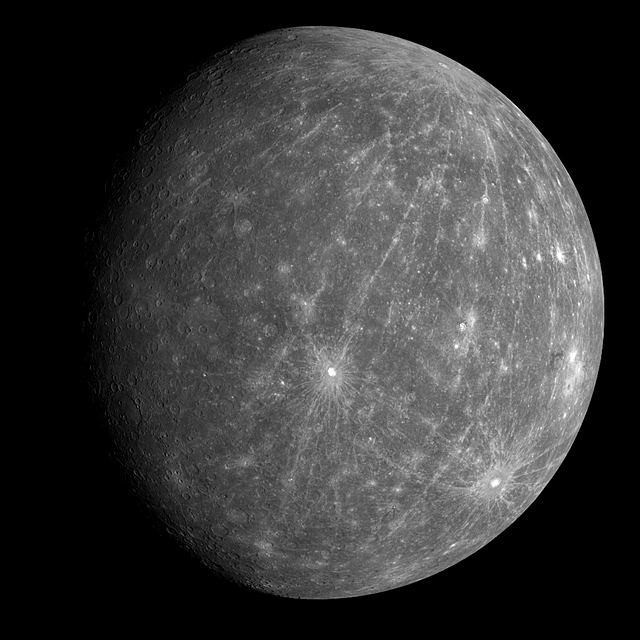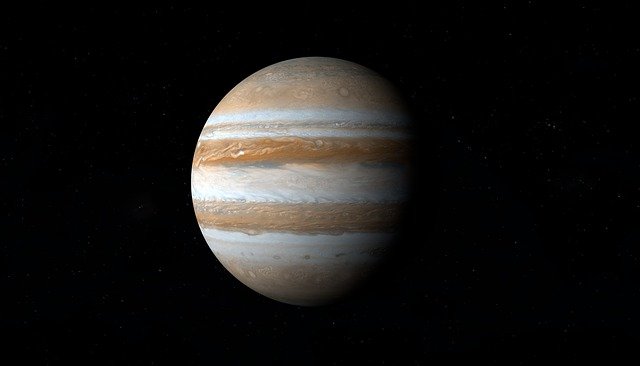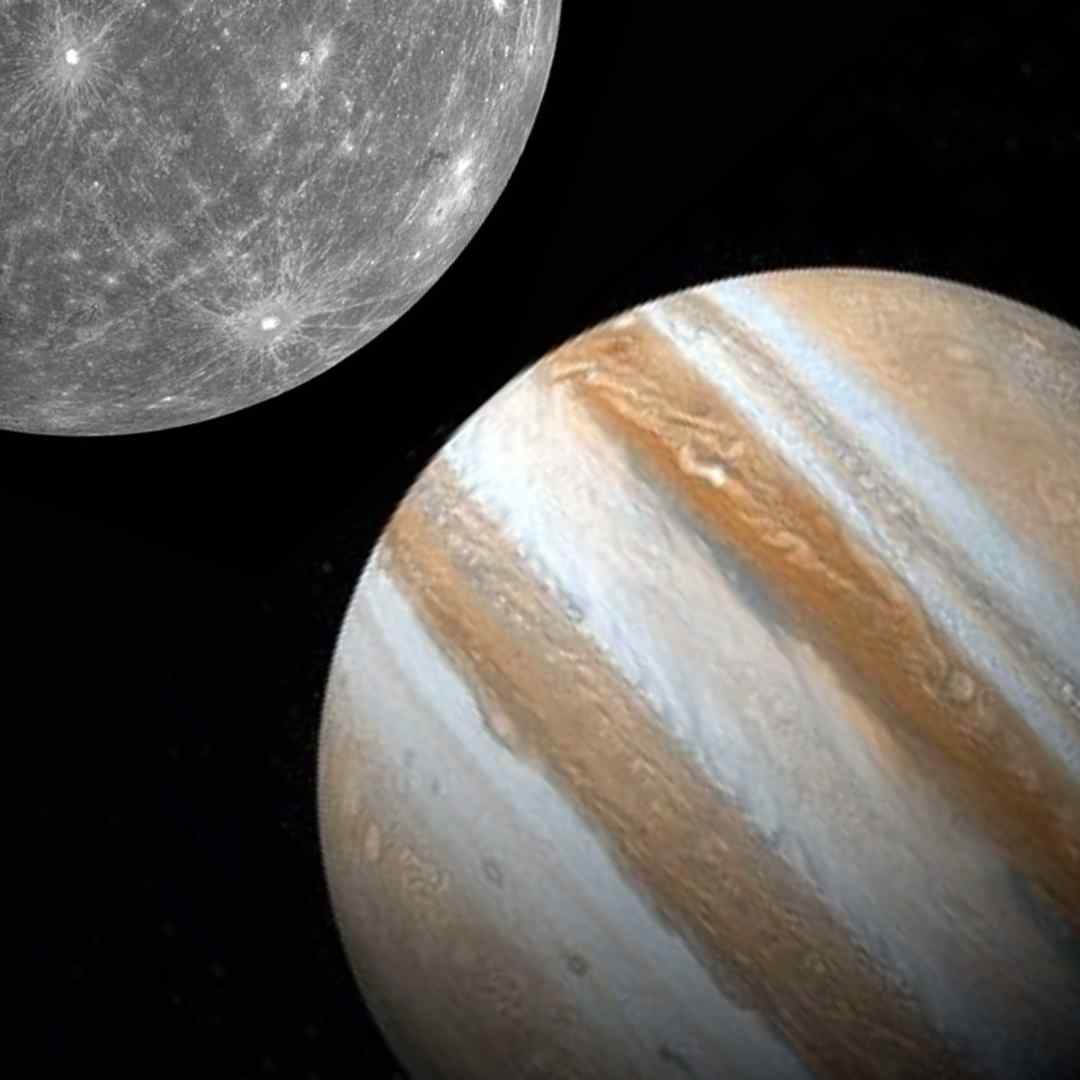*This post may contain affiliate links. This means we may make a commission if you purchase an item using one of our links*
The terrestrial planets in our solar system are Mercury, Venus, Earth and Mars. The jovian planets are Saturn, Jupiter, Uranus and Neptune. There are also dwarf planets (e.g. Pluto) which fall into a separate category of their own. Terrestrial and jovian planets differ in key characteristics including size, distance from the sun and physical composition.
The International Astronomical Union defines a planet as a celestial body that orbits the Sun, has a close to round shape, and has cleared most debris from its orbital neighborhood.
Our solar system contains two distinct types of planet which meet this definition, terrestrial and jovian. This article tells you more about the main differences between terrestrial and jovian planets.
What Is Terrestrial Planet?
Table of Contents

Terrestrial planets are those like Earth which are characterized by solid surfaces, compact size and closer proximity to the Sun. Three of the four terrestrial planets in our solar system have significant atmosphere (Venus, Earth, Mars), while one (Mercury) does not, due to temperature and high solar winds.
The word “terrestrial” is derived from Latin and means relating to the land or Earth-like. This root can help in remembering which planets belong in the same category as Earth.
What Is A Jovian Planet?
Jovian planets are those like Jupiter, characterized by gaseous composition, immense size and much greater distance from the Sun.
The word “jovian” is also derived from Latin, with ‘Jove’ being an older name for Jupiter, the chief god of the Romans, for whom the largest gas-giant in our solar system is named. You can remember jovian planets by thinking of those which share characteristics with Jupiter.
Differences Between Terrestrial And Jovian Planets
The main differences between the terrestrial and jovian planets fall into the categories below:
Size
The terrestrial planets are all significantly smaller than the jovian planets. Mercury is the smallest terrestrial planet with a radius of 1516 miles / 2440 km, followed by Mars (2106 miles / 3390 km), Venus (3769 miles / 6052 km) and Earth (3959 miles / 6371 km).
Jovian planets are on a much larger scale. The biggest jovian planet is Jupiter, with a radius approximately 11 times the size of Earth’s (43,441 miles / 69,911 km). Saturn is the second largest (36,184 miles / 58,232 km), with Uranus (15,759 miles / 25,362 km) and Neptune (15,299 miles / 24,622 km) both four times as large as Earth.
Distance from the Sun
Terrestrial planets lie closer to the Sun than jovian planets. The closest terrestrial planet to the Sun is Mercury, lying 0.39 astronomic units (AU) or 57.9 million km from our star. The furthest terrestrial planet is Mars which lies 1.52 AU (227.9 million km) from the Sun.
The jovian planets all lie beyond our solar system’s “frost line”, a point around 5 AU from the Sun beyond which surface water would generally remain solid ice even when in direct sunlight. The closest jovian planet to the Sun is Jupiter (5.2 AU / 778.6 million km) and the furthest is Neptune (30.06 AU / 4.5 billion km).
Composition and density

Jovian planets have a mainly gaseous composition made up mostly of hydrogen, with small amounts of helium, and some traces of methane, ammonia, water vapor and ices.
In contrast to surface gas layers, the cores of all four jovian planets are dense solids, combining rock, metal and hydrogen compounds.
Jupiter and Saturn have similar internal structures to one another, with successive layers of metallic hydrogen, liquid hydrogen and gaseous hydrogen extending from inside to outside, covered with layers of visible cloud containing ammonia, ammonium hydrosulfide and water vapor.
The cores of Uranus and Neptune are composed of rock and metal, combined with water, methane and ammonia. A layer of gaseous hydrogen surrounds this core, with an outer layer of visible cloud.
Terrestrial planets have iron-based molten metal cores which are less dense than the solid cores of the jovian planets. These are surrounded by a silicate rock mantle layer and a rocky surface which can include canyons, craters, mountains, volcanoes etc.. depending on the role water and tectonic activity may have played in the planet’s history.
Atmosphere
The atmospheres of jovian planets are primary atmospheres, captured directly when the planets in our solar system were formed from the original solar nebula.
Secondary atmospheres are characteristic of terrestrial planet composition (although temperature and solar wind mean that Mercury lacks such an atmosphere).
Secondary planet atmospheres result from volcanic activity or comet impacts and may differ markedly from the original primary atmosphere. Planets which support life (i.e. Earth) may develop further towards a ‘tertiary atmosphere’ through the impact of biological processes.
Rings and satellites
The much larger size of jovian planets gives them a far stronger gravitational pull than terrestrial planets, allowing them to draw and maintain a higher number of celestial bodies (e.g. moons) in their orbits.
While terrestrial planets are large enough to have their own moons, the jovian planets have a higher number of satellites. Jupiter and Saturn also have rings of dust and debris in orbit around them, possibly formed from comets, asteroids or disintegrated ancient satellites, torn apart by the planets’ strong gravitational forces.
Spin
Terrestrial planets spin more slowly than jovian planets giving them a more rounded shape. The faster spin of the jovian planets flattens their shape at the poles.
Similarities Between Terrestrial And Jovian Planets
There are also similarities between terrestrial and jovian planets, for example:
Age
All planets, both terrestrial and jovian, were formed at around the same time 4.6 billion years ago.
Shape
While jovian planets are slightly more flat at the poles, all planets are still roughly spherical.
Solar orbit
Both terrestrial and jovian planets have elliptical orbits around the Sun. Given their greater distance from the sun Jovian orbits are larger and terrestrial orbits are smaller.
Magnetic fields
It is possible for either terrestrial or jovian planets to have a magnetic field. All of the jovian planets have a very strong magnetic field, while Earth has a moderate magnetic field. Mercury has a very weak magnetic field and neither Mars nor Venus has any magnetic field.
Weather
Both terrestrial and jovian planets can give rise to weather systems including those that result in powerful storms which are visible from space.
Summary
There are two types of planet in our solar system: terrestrial and jovian.
Terrestrial planets are smaller, closer to the Sun and formed from rock around a molten metal core. They have secondary atmospheres, fewer moons, and a slower spin. Jovian planets are larger, further from the Sun and formed from gases around a solid metal and hydrogen core. They have primary atmospheres, many moons and a faster spin.
References
https://solarsystem.nasa.gov/basics/chapter1-2/
https://solarsystem.nasa.gov/resources/686/solar-system-sizes/
https://lasp.colorado.edu/outerplanets/giantplanets_whatandwhere.php
https://www.jpl.nasa.gov/edu/pdfs/scaless_reference.pdf
https://www.space.com/17028-terrestrial-planets.html
https://lweb.cfa.harvard.edu/~ejchaisson/cosmic_evolution/docs/fr_1/fr_1_plan4.html


Love your work,great job